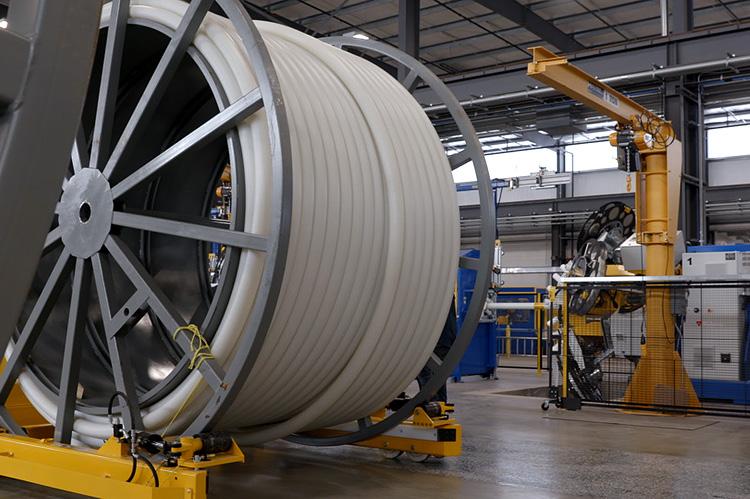Baker Hughes Launches a New Onshore Composite Pipe

Baker Hughes, an energy technology company with operations around the world, has developed an onshore composite flexible pipe that lowers the cost of ownership, reduces corrosion risks and lowers manufacturing emissions relative to traditional pipes.
The company's state-of-the-art facility in Houston will manufacture the next generation non - metallic products including flexible pipes for multiple sectors. The pipes are intended to address the corrosion and cost of ownership challenges with conventional steel pipe for energy, oil and gas and industrial sectors.
According to Baker Hughes, "the flexible, lightweight reinforced thermoplastic pipe (RTP) offers an economic and environmentally superior alternative to resource-intensive onshore steel pipes, for optimizing the core structure of flowline and oil and gas pipeline networks. A key feature of the pipe is its proven spoolable design, making it easier, faster and more cost-effective to transport and install versus steel pipe – reducing installed costs by more than 20%. Installation also requires fewer onsite support facilities and heavy vehicles, de-risking operations, taking up less width on a pipeline right-of-way and reducing environmental impact on surrounding land."
“This pipe is the result of our strategic investments for growth in innovative non-metallic materials,” said Hatem Haidar, global vice president of flexible pipe systems - onshore at Baker Hughes. “We are committed to supporting safer, more efficient and cost-effective technical solutions to serve the energy sectors, and non-metallics play a key role. We see flexible pipe as a vital component of today and tomorrow’s energy and industrial sectors – enabling the transport of multiple energy sources, including hydrogen and natural gas.”
The Onshore Composite Flexible Pipe will likely play a role in the transition from natural gas to hydrogen, as well as the conversion of existing infrastructure to carry gases. In addition, the pipe’s non-corrosive materials can withstand contaminants without requiring chemical inhibitors, corrosion monitoring and inspection, or disruptive repair work – significantly reducing operating expenditures.
Comments
Limitation of size and operating temperature
Can you please specify the size range and limiting temperature and pressure for such pipes? We face corrosion issues in onshore upstream transfer Pipelines lines ( Oil ), where such pipes may be used . However, maximum temperature criteria ( approx. 100 Deg C) make them unsuitable.

